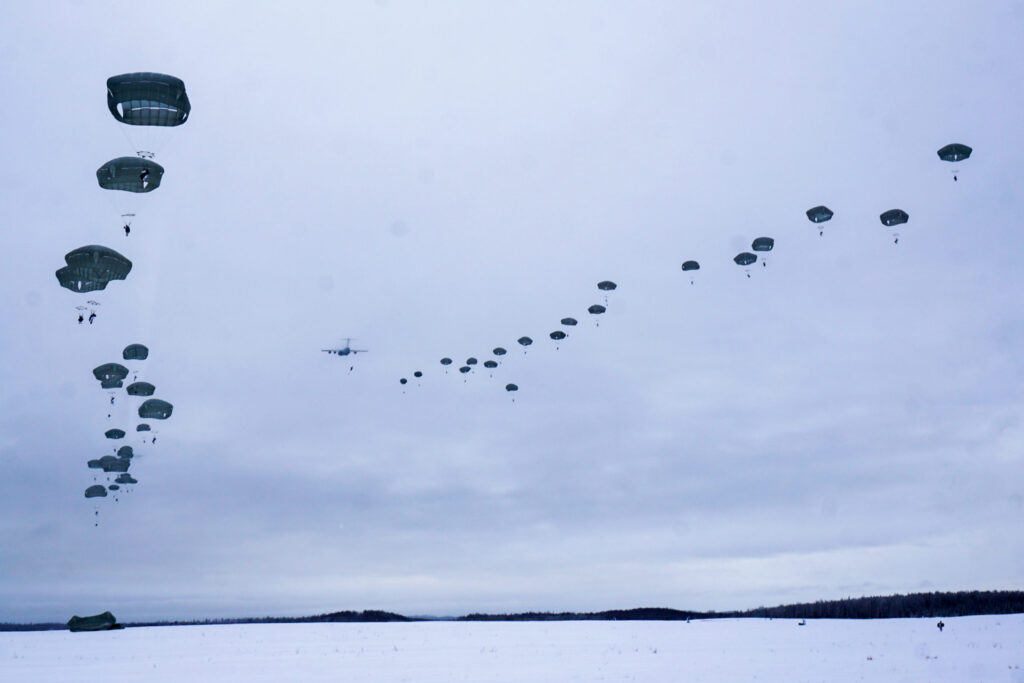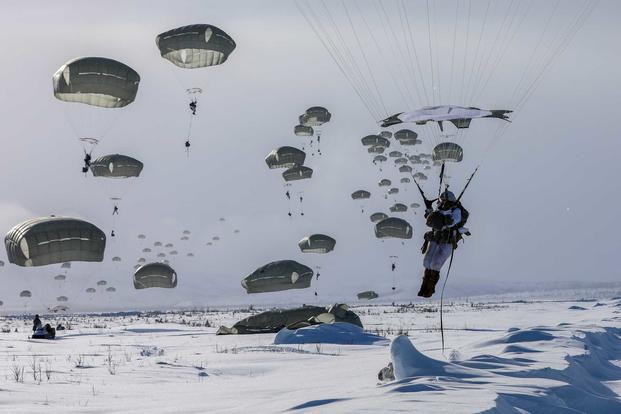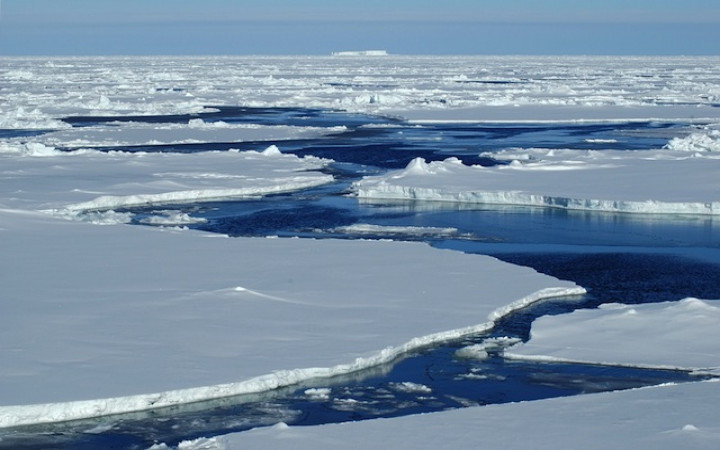In the 19th century, Western nations carved up the global map according to the age-old rules of sovereignty, in which the first country to plant the flag would control all the resources as long as it could defend it. That era may be long gone, but the same scheme still persists.
In spite of the Arctic region being desolate and frozen throughout the year, it is the center of a new quest for power. A new scramble for power and influence has begun among Russia, China, America, Canada, and Norway. However, these countries are yet to assert their control over the Arctic. These countries want to carve new maritime borders and establish their sovereignty in the region. The real question is, “WHY?”.
Arctic ice caps are melting, and the seascape is changing rapidly. The Arctic ice sheet has shrunk by 95% in the last four decades. If unchecked emissions of greenhouse gases continue to rise, the Arctic could be ice-free by the summer of 2040 for most of the world. Although melting ice means a disaster for most nations, for the arctic nations, it also means new opportunities accessible to a brand-new ocean with brand new resources like 13 percent of the world’s undiscovered oil, 30 percent of the world’s undiscovered gas, and an abundance of uranium, gold, diamonds, rare earth minerals, and fisheries galore, all up for grabs. According to a 2018 survey, the Arctic could contain 44 billion barrels of natural gas liquids, 669 trillion cubic feet of natural gas, and 90 billion barrels of oil. They are hidden beneath the Arctic, and their cumulative worth could run into trillions of dollars.

The melting ice-caps would also create new sea routes that could reduce the distance between Europe and Asia by 40%. Typically, it takes 30 days for a ship to travel from Rotterdam to Japan using the Swiss Canal route, but once the glacier melts, it would take just 18 days for the same trip, which would also reduce the emission of greenhouse gases by the shipping companies and give clout to countries looking for a competitive edge. While over 14,000 ships pass through the Panama Canal each year and over 20,000 ships pass through the Swiss Canal in Egypt, fewer than 100 ships pass through the Arctic each year. The number of ships passing through the Arctic will increase as the ice-caps melt, and consequently, the number of ships passing through the Swiss and Panama Canals will decrease. This would save both time and resources and ensure smooth global trade. One might remember the ever-given fiasco of a single ship stranded on the Swiss canal, which halted international trade for weeks. The Arctic would not face such challenges without the glaciers, and thus, no canal routes would be blocked. This will bring more resilience to the global shipping infrastructure. Simply put, the Arctic will be of significant strategic relevance in the years to come, which is why nations are competing for influence. These countries include Canada, the USA, Russia, Finland, Norway, Sweden, Iceland, and Denmark. They all have territories within the Arctic with overlapping claims of economic sovereignty for a long time, and these claims should not be contested. The United Nations Convention has granted all the eight countries equal rights in Exclusive Economic Zones (EEZ) up to 200 miles beyond their coasts where they can fish, mine, and dig for oil. The waters beyond these were deemed the common property of all mankind. However, since the end of the 20th century, countries have been making attempts to change the status quo. In 2007, the USA started mapping to determine the extent of its control. Each party has made a claim with varied degrees of strength; Canada expanded its territorial claim to the North Pole in 2013, and Russia claimed 1.2 million square kilometers of the Arctic Sea shelf in 2015.
The question is, “Who owns the Arctic?”. Every nation has an equal claim to the Arctic under the law of the sea, but Russia has the most influence. According to Article 234 of the United Nations Convention, in the name of the prevention, reduction, and control of maritime pollution from vessels, countries whose coastlines are near arctic shipping routes should have the stability to regulate the routes of maritime traffic so long as the area remains ice-covered for the majority of the year. Russia interprets this article to its advantage and controls the majority of the Arctic because it has the longest coastline in the Arctic, spanning 24,000 kilometers, accounting for 53% of the Arctic Ocean’s coastline, and Russia has the most ice breakers. Thus, Russia operates a fleet of 40, Canada operates more than 21, and the USA operates only 2.

“Why do icebreakers matter?”. The reason is that they give Russia an advantage in navigating through the Arctic faster, which further increases its ability to help the ships that get stuck. Russia has used these advantages to further its interests, especially along the Northern Sea Routes. One Russian law requires all vessels passing through the Arctic to be either accompanied or captained by Russian sailors. Moscow also asks passing vessels to pay tolls and provide advanced notice of their journey. Furthermore, Russia has militarized the Arctic heavily in the last seven years and has expanded its northern fleet to reopen all naval bases, create new air force camps, increase submarine patrols, establish a pair of Arctic brigades, and organize its military to create an Arctic command. Alongside this military buildup, Russia engages in frequent incitements like sending its bombers to the Canadian Arctic coast, letting them stray across Finland’s borders, and sending its officials to the Norwegian-administered Arctic territories. In 2018, Russia has also robbed China of help by declaring it near Arctic states, which makes no sense at all. China’s northernmost part is 900 miles away from the Arctic Circle, but China has declared itself near the Arctic and Russia has backed China’s bid. This tilts the strategic balance in Moscow’s favor because it establishes a Sino-Russian alliance in the Arctic.
China has brought more icebreakers to the table. It is building a polar silk road in the Arctic, which is an offshoot of the Belton Road Initiative (BRI). It is an ambitious plan to develop two new trade routes connecting China with the rest of the world. The Belton Road Initiative brig, which is also carrying out scientific research expeditions today, has Chinese researchers in Svalbard, a Norwegian territory. Chinese icebreakers are also frequent visitors. They are equipped with state-of-the-art monitoring systems. These vessels survey the sea floor for resources.

The Sino-Russian alliance may be working for now, but it may not last forever as China is known for harboring big ambitions and Russia is known for being protective of its stakes. Thus, there are chances of this relationship turning hostile. As the ice melts, the Arctic roots will become more accessible and lucrative, and the cracks will begin to show in more ways than one. This polar power play also runs certain risks. It will open up the region to human activity, which will disturb Arctic communities and ecosystems. Coastal erosion in Arctic nations would force them to move inwards, triggering severe environmental degradation. It may also reawaken long-dormant diseases. While this may sound like the plot of a sci-fi movie, it is rooted in reality. According to the scientists, mysterious and perhaps deadly microbes are lying dormant below these ice sheets. Unknown viruses have been thriving in these extreme conditions in crystallized form for centuries. Once the ice thaws, these microbes may awaken, and the implications of this could be as disastrous as the deadly Anthrax outbreak of Siberia in 2016, which was linked to the thawing of an infected reindeer buried in the permafrost for 70 years. A heat wave melted the surrounding eyes and exposed the corpse to the open air, which led to the infection killing thousands of reindeer and affecting dozens of people.
Thus, if the Arctic ice sheets melt, it might be both a boon and a curse. While it would be a boon for business and trade, it would be a curse for the ecosystem of the planet.

Rahul Panwar
Rahul Panwar is pursuing MA in Defence Studies. Also, Associate Member of MP-IDSA Delhi doing research and covering National and International topics.


This web page is really a walk-by way of for all of the data you wished about this and didn’t know who to ask. Glimpse here, and also you’ll definitely uncover it.
I got what you intend,saved to my bookmarks, very decent web site.
What’s Going down i’m new to this, I stumbled upon this I’ve found It absolutely helpful and it has helped me out loads. I hope to contribute & aid different users like its aided me. Great job.
I’ve learn some excellent stuff here. Definitely price bookmarking for revisiting. I surprise how a lot effort you set to create such a great informative website.
Thank you, I have recently been searching for info about this topic for ages and yours is the greatest I’ve discovered so far. But, what about the conclusion? Are you sure about the source?